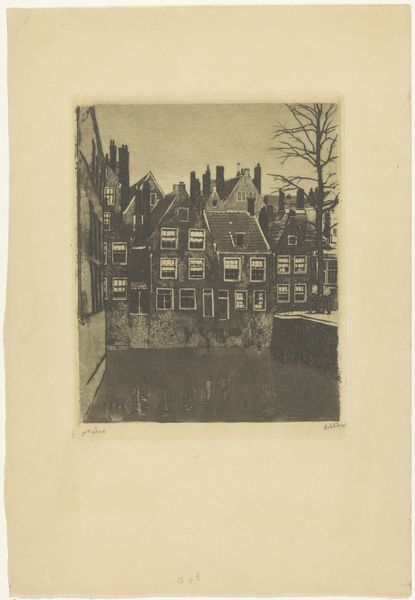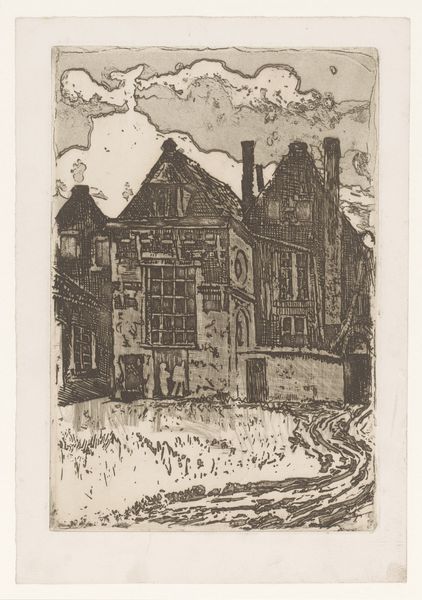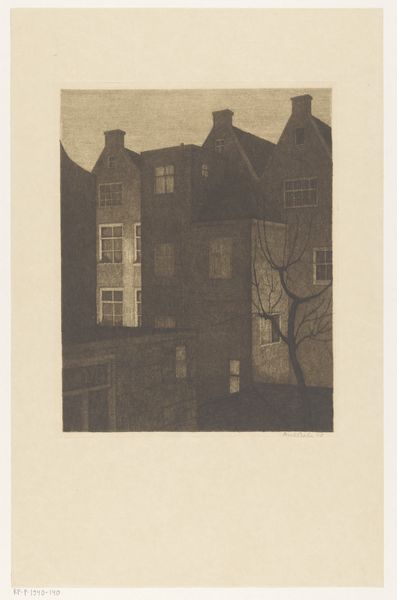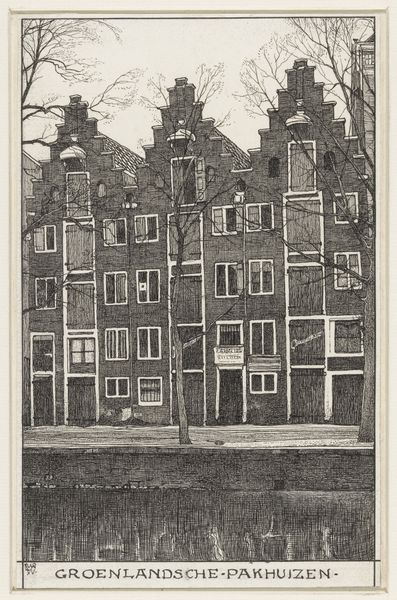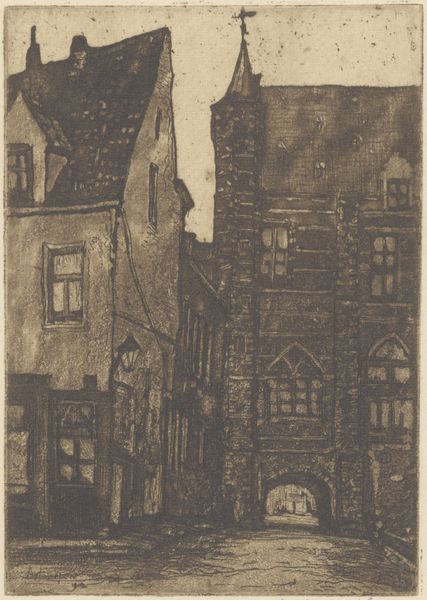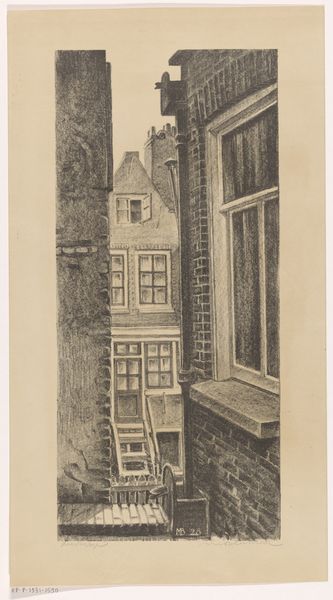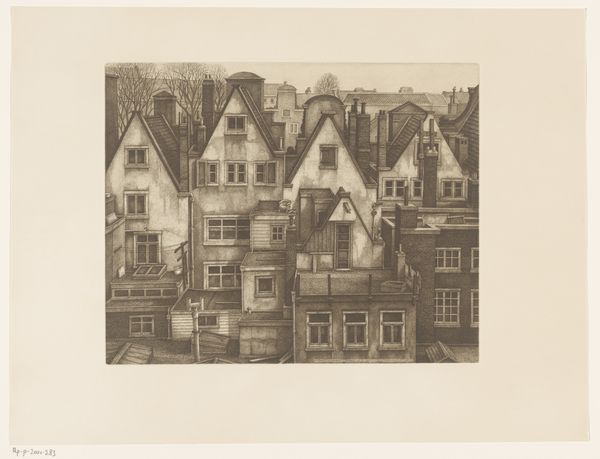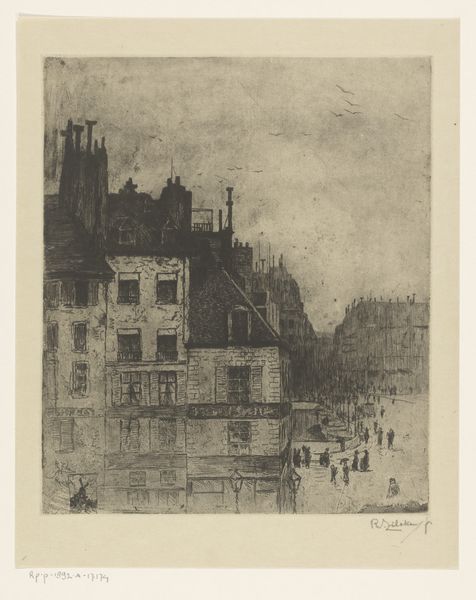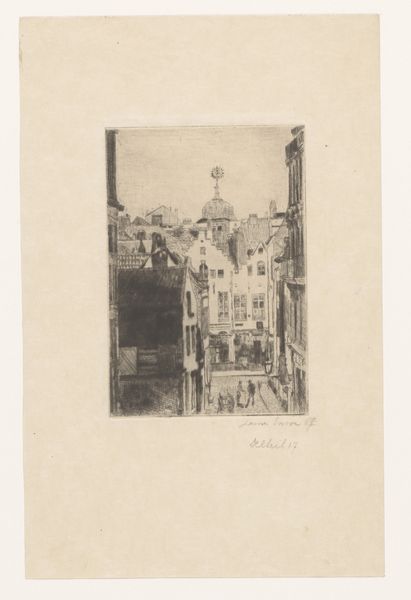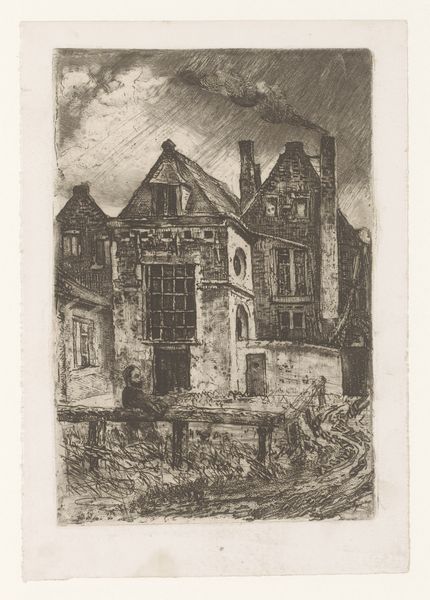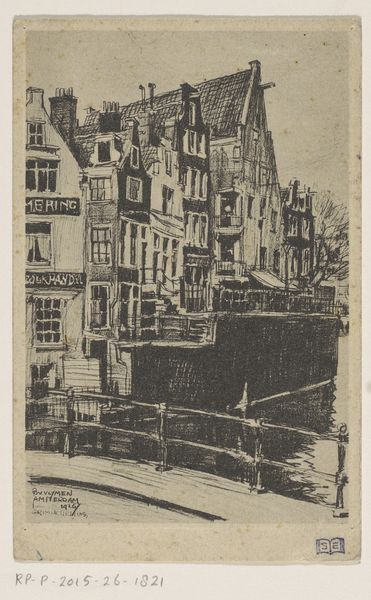
drawing, print, etching
#
drawing
#
aged paper
#
dutch-golden-age
# print
#
etching
#
old engraving style
#
landscape
#
cityscape
#
watercolor
Dimensions: height 450 mm, width 348 mm
Copyright: Rijks Museum: Open Domain
Curator: This etching by Wijnand Otto Jan Nieuwenkamp, likely created between 1912 and 1929, presents us with a view of "Huizen aan de Voorstraatshaven in Dordrecht" or "Houses on the Voorstraatshaven in Dordrecht." Editor: It's incredibly detailed! The density of lines creates an almost overwhelming texture, evoking a rather somber mood, wouldn't you agree? Curator: Yes, the print's tonal range does lend a certain gravitas. This level of detail reflects Nieuwenkamp's interest in maritime scenes, architectural subjects and his skill as a printmaker, allowing for intricate depictions of the cityscapes. Editor: Looking at the formal composition, it's really dominated by the verticality of the buildings. They create a rhythmic pattern of gables, drawing your eye upward, but the reflections in the water give some relief. The contrast is compelling. Curator: This area of Dordrecht, like many Dutch port cities, has a history deeply intertwined with trade and commerce. Visualizing those old houses through art can reflect how power structures of the time shaped city development and community identities along canals. Editor: The texture really captures the age and material quality of the architecture. Look at how the light barely touches on a few white façades. Semiotically, this play of light and shadow might signify ideas of Dutch prosperity versus hardship, no? Curator: Possibly. We should not overlook the sociopolitical context where increasing urbanization prompted reflections on the contrast between city progress and traditional environments—art captured public sentiment then as now. Editor: Certainly, the human presence is suggested more than explicitly shown. The windows, what might be laundry... These are really suggestive markers. And that single figure on the second floor, they become important. Curator: Agreed. The beauty of prints is that their existence can be endlessly reproduced, democratizing art so even the less well-off in the society are allowed access and maybe inspired, so etching really advanced progressive movements back then. Editor: It's remarkable to consider how simple lines can evoke so much emotional resonance and symbolic weight. This print speaks of the formal relationship and material connection to Dutch heritage—and reminds us still today. Curator: Absolutely. Through Nieuwenkamp's perspective, we encounter both a depiction and commentary on this historic town in Dutch history.
Comments
No comments
Be the first to comment and join the conversation on the ultimate creative platform.
